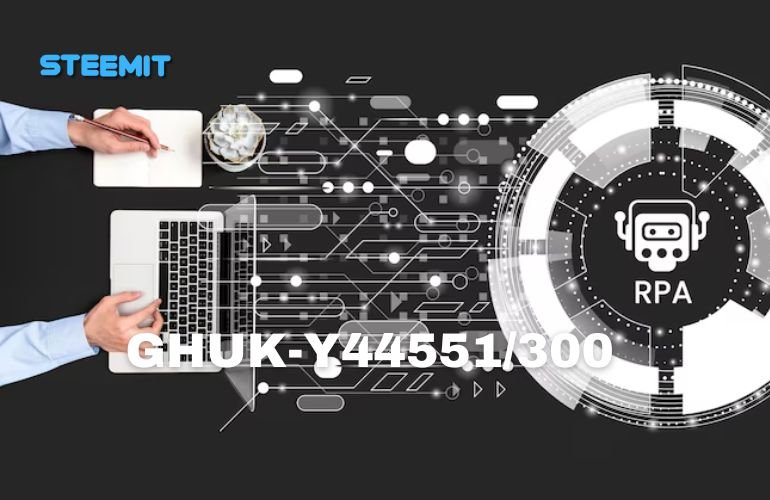GHUK-Y44551/300 is a technology reshaping how industries approach automation, security, and efficiency. Designed for high-speed processing and adaptability, it bridges gaps between complex workflows and user accessibility. Its role spans sectors like healthcare, manufacturing, and logistics, where precision and scalability matter. Built with AI-driven systems and advanced security protocols, it addresses modern demands for reliability and innovation. This article explores its features, applications, and why it stands apart in competitive markets. Discover how GHUK-Y44551/300 could redefine operational standards in your field.
Core Features and Technical Specifications
GHUK-Y44551/300 combines advanced engineering with practical design to meet diverse industrial needs. Its high-speed processing capability handles complex tasks in real time, reducing latency in data-heavy environments. The system integrates AI-driven automation, allowing it to adapt to dynamic workflows and improve accuracy over repeated use.
A user-friendly interface simplifies interactions, enabling seamless operation across skill levels. Security protocols include multi-layered encryption and real-time threat detection, protecting sensitive data from breaches. Energy-efficient components minimize power consumption without compromising performance, aligning with sustainability goals.

The hardware features a robust build, resistant to extreme temperatures and physical stress, ensuring durability in demanding settings. Compatibility with existing systems is prioritized, supporting standard communication protocols and third-party integrations. Technical specifications highlight a 99.9% operational uptime, scalable storage options, and low error rates. These elements position GHUK-Y44551/300 as a reliable solution for modern challenges.
Industry Applications and Use Cases
GHUK-Y44551/300 serves as a versatile tool across sectors requiring precision and adaptability. In healthcare, it streamlines patient data management and supports diagnostic systems by processing large datasets securely. Manufacturing plants deploy it for real-time monitoring of production lines, minimizing downtime through predictive maintenance alerts.
Retail and logistics benefit from its integration into inventory tracking, where high-speed processing ensures accurate stock updates and reduces supply chain bottlenecks. Educational institutions use the technology to manage research data, enabling collaborative analysis without compromising sensitive information.
Emerging fields like smart cities rely on its IoT compatibility to optimize traffic control systems and energy distribution grids. Blockchain applications leverage its security protocols for transparent supply chain records, reducing fraud risks. Even niche areas, such as academic research, employ its AI-driven automation to classify complex datasets efficiently. These examples illustrate how GHUK-Y44551/300 addresses both common and specialized challenges, proving its value in diverse operational environments.
Implementation, Maintenance, and Optimization
Deploying GHUK-Y44551/300 requires aligning its setup with existing infrastructure. Installation involves configuring hardware interfaces and software modules to match operational requirements. Compatibility checks with legacy systems are recommended to avoid integration conflicts, supported by standardized communication protocols.
Routine maintenance focuses on software updates and hardware inspections. Automated alerts notify users of pending updates or potential system anomalies, reducing manual oversight. The robust design minimizes wear in harsh conditions, though periodic checks of components like cooling systems and connectors help sustain performance.
Optimizing the system involves adjusting AI algorithms to specific workflows, improving task accuracy over time. Energy-saving modes can be activated during low-demand periods, balancing power use without disrupting operations. Scalable storage and processing upgrades allow expansion as needs grow. Training teams to interpret system analytics ensures proactive adjustments, maximizing uptime and reducing error rates. These practices extend the technology’s lifespan while maintaining its efficiency in evolving environments.
Competitive Edge and Future Innovations
GHUK-Y44551/300 distinguishes itself through a balance of adaptability and reliability. Unlike traditional systems limited to fixed workflows, its AI-driven automation learns from operational patterns, refining processes without manual intervention. Competitors often prioritize speed or security in isolation, but this technology integrates both, maintaining high performance even under heavy data loads.
The interface design sets it apart, offering simplicity without sacrificing depth. Where similar systems require specialized training, GHUK-Y44551/300 allows users to navigate complex tasks through intuitive controls. Energy efficiency further differentiates it, as many alternatives consume excess power to achieve comparable output.
Looking ahead, advancements in AI and IoT will expand its capabilities. Plans include enhanced real-time analytics for predictive decision-making and tighter integration with decentralized networks like blockchain. Future iterations may incorporate quantum computing frameworks to accelerate data processing exponentially.
Developers are also exploring modular upgrades, letting users customize hardware components for niche applications—from climate modeling to autonomous robotics. As industries shift toward interconnected ecosystems, GHUK-Y44551/300’s compatibility and scalability position it to adapt, setting benchmarks for innovation in automation and security. This forward-focused approach ensures relevance in rapidly changing technological landscapes.
The Path Forward
GHUK-Y44551/300 represents a shift in how industries approach automation, security, and scalability. Its design bridges immediate operational demands with long-term technological evolution, offering solutions that adapt as challenges grow more complex. From healthcare to smart infrastructure, the technology’s impact lies in its ability to simplify workflows while maintaining rigorous performance standards.
The integration of AI-driven automation, energy efficiency, and robust security creates a framework that outperforms static systems. Its compatibility with emerging trends like IoT and blockchain underscores a readiness to meet future needs, from decentralized networks to quantum computing.
Industries adopting GHUK-Y44551/300 gain not just a tool but a foundation for innovation. As global demands for speed, accuracy, and sustainability intensify, this technology provides a blueprint for progress. Its ongoing development—modular upgrades, predictive analytics, and expanded applications—promises to redefine what automated systems can achieve.

For organizations aiming to stay ahead, GHUK-Y44551/300 is more than an investment; it’s a strategic step toward resilient, forward-thinking operations. The next phase of technological advancement will hinge on such adaptable solutions, positioning this system as a cornerstone of modern industrial evolution.
Conclusion
GHUK-Y44551/300 stands as a transformative force in modern industrial and technological landscapes. By merging high-speed processing, AI adaptability, and stringent security, it addresses both immediate operational needs and future challenges. Its applications span healthcare, manufacturing, logistics, and emerging fields like smart cities, proving versatility across diverse environments. The system’s energy efficiency and user-centric design set benchmarks for competitors, while ongoing advancements in AI and IoT integration signal its capacity to evolve with shifting demands. Organizations adopting this technology position themselves at the forefront of innovation, equipped to navigate complexities with agility and precision. As industries prioritize sustainability, automation, and scalability, GHUK-Y44551/300 offers a blueprint for progress, redefining standards for performance and reliability in an interconnected world.





